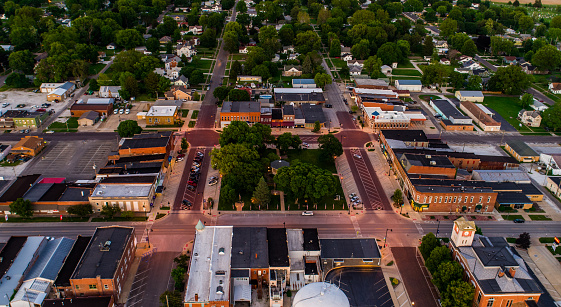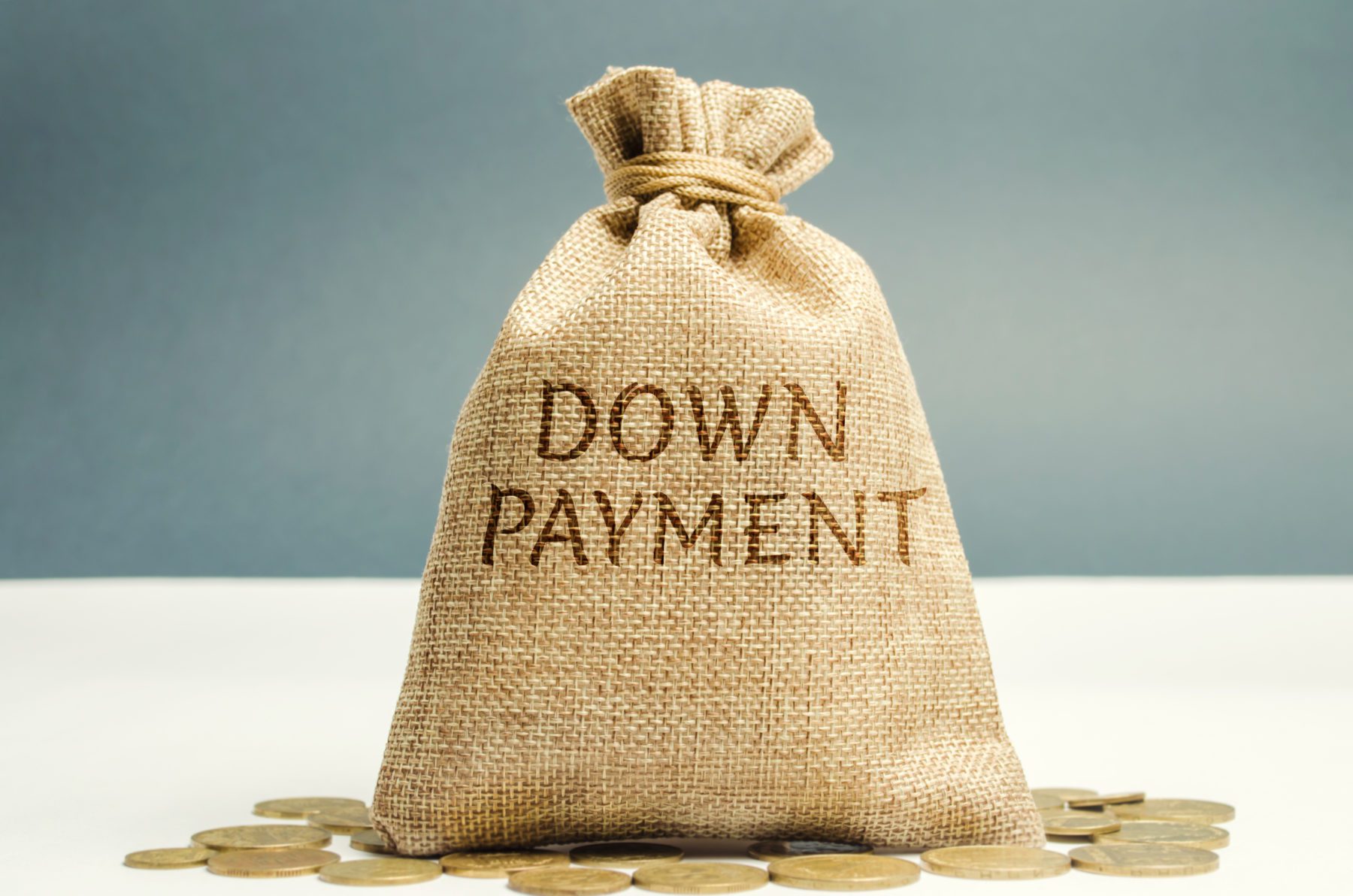Moving to Celina-Celina City Guide

Thinking of moving to Celina, TX? Congratulations! This thriving little town near Dallas-Fort Worth is a great place to live. Learn the answers to your most pressing questions: Is Celina, TX a good place to live? What is Celina, TX’s crime rate? What are some fun things to do in Celina, TX? Small town charm with the big city a short drive away is just one of the many reasons you’ll love this town. Our Celina city guide includes information on what you can do for fun in Celina, and other important details that you will want to know.
One of the Fastest Growing Cities in DFW
It’s no surprise that Celina, TX is one of the fastest-growing cities in DFW. Celina’s growth can be attributed to its convenient location to top employers, thriving business park, top schools, and low crime rate. The Celina, TX crime rate is well below the national average and rated an “A+” by areavibes.com. Both violent crimes and property crimes are approximately 70% below the national average, which makes Celina a very safe place to live. These are just a couple of reasons that make Celina appealing to people looking to invest in meaningful place to call home.
Where is Celina, TX
Where is Celina, Texas located? This growing city of just over 23,000 is located up the road from Prosper, about 13 miles north of Frisco and 17 miles northwest of McKinney. Celina, Texas is 33 miles, or 40 minutes north of Plano and 42 miles, or about 50 minutes north of Dallas. Celina is located in both Denton and Collin counties.
Cost of Living in Celina
According to payscale.com, the cost of living in Celina, TX is 19% lower than the national average. When it comes to housing, utilities, and transportation, Celina just about matches the national average with the exception of housing costs, which are about 18% lower than the average. Food and grocery prices are 11% lower than the national average, whereas healthcare costs are 2% higher than the national average.
What to Do in Celina
You will not run out of fun things to do in and around Celina, TX. Celina’s historic town square offers a variety of wonderful restaurants and unique shops. Nearby cities also have historic downtown areas with shopping markets, seasonal festivals, restaurants, music venues and incredible outdoor space to roam. Places like Hope Park and Arcade 92 are perfect for all ages, young and old! You won’t believe how much fun Celina offers until you see it for yourself.
Four Fun Activities in Celina, TX
- Hope Park
This park is amazing for all children, no matter what their abilities are. It’s an all-inclusive fun land that has playground equipment, splashpads, climbing walls, and a host of developmental play themed areas for all ages to enjoy. - Arcade 92
Arcade 92 is a place to eat and let your hair down, so to speak. It’s family-friendly but also a popular place to enjoy happy hour or plan a party to celebrate a special occasion. There are games galore, including pinball, retro video games, and the ever-popular gaming lounge. - Historic Downtown McKinney
Shop, dine, and enjoy is the motto of Historic McKinney, and there are a million reasons why. From fine dining restaurants, chic pubs to local coffee shops and bakeries, McKinney has it all! Cities near McKinney, TX are host to popular events and festivals that are unique to the area and will quickly become a favored tradition. - Frisco Fresh Market
This popular hot spot offers a year-round farmer’s market that is open, rain or shine. Locally harvested and carefully prepared foods are sold here amongst live music, in-person demonstrations, and special events. This family (and pet) friendly destination offers up to 100 vendors and is home to a wide variety of goods for sale. Typically, cities near Frisco, TX, like Celina, are considered neighbors and are welcomed as part of their community as well.
Celina, TX is a Great Place to Call Home
These are just a few of the attractions Celina, TX offers its residents. The friendly town also eagerly welcomes newcomers, so it’s just the kind of place you can call home. Still not sure if living in Celina, TX is right for you? If you need more encouragement, contact us today. Or better yet, drive on over for a visit, take a look at our homes, and see for yourself all the reasons this up and coming city is so appealing!
Posted on February 3, 2021 by Taryn Dandurand
Down Payment Percentages Explained

Whether you’re relocating for work and moving into your second home, or you’re purchasing a home for the very first time, one of the first financial decisions homebuyers need to make is how much to put down for a down payment.
There are a number of ways to settle on a down payment. Whether through referencing local real estate trends, or using personal finances to decide, determining the right down payment percentage is incredibly important for establishing month-to-month financing after you sign on the dotted line.
Need help? The home buying experts at Lilyana break down the benefits of down payment percentages for any budget.
What is a Down Payment?
A down payment is a portion of a home’s price that the homebuyer agrees to pay out-of-pocket. With a conventional home loan, it’s common for homebuyers to contribute anywhere from 5 to 20% to pay for a home while choosing a down payment amount all depends on loan type, the homebuyer’s finances, and market trends.
This all may sound a bit confusing to a new homebuyer, but the math for determining a down payment percentage is pretty simple. For example, if a home costs $150,000, and the homebuyer pays for $15,000 out-of-pocket, this is a 10% down payment. This means the homebuyer burrows $135,000 from the bank to pay for their home through monthly mortgage payments.
Calculate your own monthly payments with Lilyana’s handy Mortgage Calculator and discover the down payment percentage and monthly payment amounts that could make it possible for you to afford the home of your dreams.
What is a Typical Down Payment on a House?
One of the most common questions first time homebuyers ask when researching financing options is do you need to put 20% down on a house? And the short answer is no. The average down payment on a house in the United States is about 12% for repeat homebuyers and just 6% for first-time homebuyers.
While it’s true there are advantages to putting 20% down, if putting down a smaller amount up front makes a home more affordable, a lower down payment percentage may be the right option for you.
Choosing a 20% Down Payment
A 20% down payment has been considered best practice for a long time, and for good reason. First, a higher down payment percentage may lower your monthly payments and mortgage insurance costs.
When homebuyers pay 20% out-of-pocket, this automatically frees the homebuyer from paying Private Mortgage Insurance (PMI) which can be as high as 2.25% of your original loan. Avoiding additional fees like PMI payments can help you save money month-to-month, but it requires a greater upfront cost.
Putting 20% down can also qualify homeowners for a lower interest rate loan because it signals to the lender that the borrower is lower risk. When homebuyers put down 10%, this requires the bank to cover 90% of the home’s costs and can result in higher interest rates to ensure the loan is paid back. Borrowing less takes a lot of the financial burden off of the lender and can often result in a mortgage with a lower interest rate.
Additionally, a 20% down payment can also help homebuyers to stand out in a competitive real estate market. If a homebuyer is willing and able to put down 20%, this can give them a competitive edge in a market saturated with buyers.
Choosing a 10% Down Payment
After reading about all of the benefits of a 20% down payment, it may seem like putting down anything less comes with a much greater risk, but that isn’t necessarily true. The average down payment on a house in the United States is 12% and borrowing at 10% may be the best financing option for first-time buyers.
Coming up with the money for a down payment is often the biggest barrier to entry for first-time homebuyers, in fact, for many it may not even be possible. While a 10% down payment will require the homebuyer to pay Private Mortgage Insurance each month, taking on more monthly costs and leaving a larger sum of assets out of a home’s equity may make more financial sense for homebuyers with fewer savings.
Putting 10% down also allows homebuyers to put more money towards improvements and repairs which could increase a home’s value. Then, when it comes time to sell, homebuyers may be able to put some of this money towards a larger down payment on their next home.
Choosing a 5% Down Payment
A 5% down payment may have been a risky financing option in the past, but today small down payments are a very viable option for many first-time homebuyers with stable incomes, good credit, and even debt.
For instance, if you’re a first-time buyer with student loan debt, but you have a great credit score, purchasing a home at 5% down could allow you to cover the cost of the down payment without any assistance.
If you also have steady income and prospects of making more money due to career advancement or a promotion, a 5% down payment would allow you to pay what you can afford with the option to refinance your home later once you earn a greater living.
Choosing the right down payment percentage is all about understanding your options. You can get started in your homebuyer journey with our helpful Mortgage Calculator tool, or get in touch with a friendly Lilyana realtor to get started finding the right home for you and your budget.
Posted on November 12, 2020 by Taryn Dandurand
4 Ways Owning a Home is so Different from Renting

Are you thinking of finally moving out of your rental and taking the plunge into the homeownership pool? It’s a tough decision to make and there are many factors to consider when you’re going from renting to owning. It can be tough to get the process started and fully know what to expect.
Whether you’re preparing to close on a home, or you’re just learning about down payment percentages, the differences between renting and owning are vast, especially when moving from a small apartment to a house with multiple floors.
If you’re ready to set off on the path to homeownership, here are some major differences between renting and owning that you can expect after you purchase your first home.
1. Expenses
Before moving from an apartment to a house, it’s a good idea to go over your finances. Ask yourself these questions:
- How much do I/we currently have saved?
- How much more are we willing to pay per month/year for a place to call home?
- Do I/we have steady employment?
- What is my/our credit score?
Once you feel comfortable with the answers to these questions, you can map out the additional expenses that come with homeownership.
Renting seems simple enough, right? Each month, you pay rent, utilities, and in some cases, parking. Your landlord is responsible for any maintenance and repairs that take place during your lease.
Owning a home is much different. When you’re going from renting to owning, consider these additional expenses:
- Down Payment
- Mortgage
- Property Tax
- Interest
- Mortgage Insurance
- Homeowners Association Fees (HOA)
Not to mention, you are responsible for maintenance and repairs, as well as ALL utilities.
First thing’s first. Talk to a mortgage lender about getting pre-approved. Once you understand the financial difference between buying and renting a house, the loan amount you are allowed to borrow, and what the current interest rates are in today’s housing market, you’ll feel more confident making this big decision.
2. Maintenance
If you’re a self-proclaimed DIY-er (thank you, HGTV, for making us all feel like we can be!), this point shouldn’t affect your decision too much. That being said, before you get too excited about buying a home, consider the fact that when going from renting to owning, you, as the homeowner, will be responsible for any maintenance the house might need.
Renters often take for granted the luxury of not being expected to pay for repairs and maintenance. This isn’t the case with homeownership. One major difference between buying and renting a house is the maintenance that comes with it. Before you buy, think about all of the time, money, and energy you are going to put into:
- Lawn Care/Landscaping (see our tips for Creating Curb Appeal on a Budget)
- Snow Removal
- Leaf Removal
- Plumbing
- Electrical
However, there is one huge positive to take away from this. As a homeowner, you can do whatever you want to your space. From paint, to design, to fixtures, etc., you don’t have to run your ideas by a landlord before making a change. Better yet, buying a home in our Lilyana community makes adding upgrades and personal touches easy as pie.
You can take a virtual tour of available homes and preview floor plans to get a sense of all of the design possibilities. Lilyana homes are built to reflect the tranquility and convenience of the community and our expert realtors have made it easy to tour the home of your dreams wherever you are. Find out more about Lilyana and all of the great things you can expect when you call Lilyana home.
3. Stability
Although you may be a seasoned renter by now, there is always uncertainty with living in a home or apartment you do not own.
Moving from an apartment to a house can make you and your family feel more settled. Instead of always signing a new lease or researching a new place to stay. Why not plan to plant roots (metaphorically and literally) for a lifetime?
You and your family can feel freer knowing you don’t have neighbors living directly above, below, or next to you. Your kids can use the yard as their own playground while you host family and friends for a cookout. Have you waited all this time while renting to own a pet? Becoming a homeowner allows you to finally give an animal the loving home it deserves!
Doesn’t that sound ideal?
As a renter, you can’t predict if your landlord will sell the building or increase rent payments. Homeownership takes away that unknown!
4. Lifestyle
For many people, being able to live out the American Dream, means owning a home. The difference between renting and owning comes with pride-of-ownership and a permanent place to call home.
(It also comes with not having to lug groceries up flights of stairs or into elevators!)
Moving into a new community allows you and your family to explore your surroundings, make connections with neighbors, and really become one with your city.
Have you considered moving to a master-planned community? At Hillwood, we pride ourselves on building and creating communities that are anything but cookie-cutter, just like our homes at Lilyana.
Owning a home in our Lilyana community means comfort, tranquility, convenience, and much more. The homes in this conveniently-located community (just 10 miles north of Frisco!), are affordable and provide all of the amenities you and your family desire.
Now that you’ve read through some of our thoughts on homeownership, we hope you feel inspired to take the first, however small, step towards your forever home.
Posted on October 1, 2020 by Taryn Dandurand


